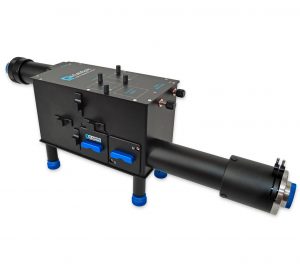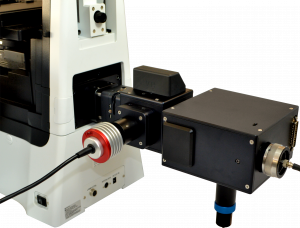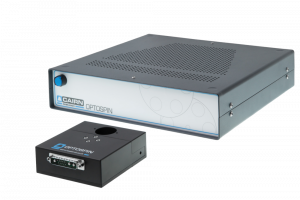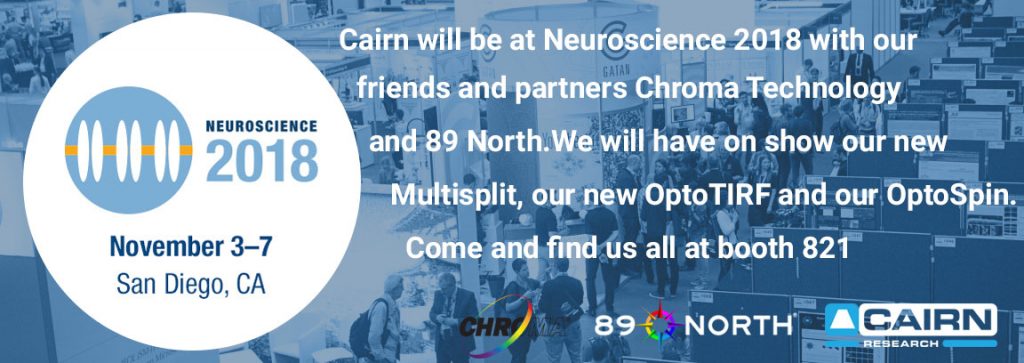We will be at Neuroscience 2018
We are looking forward to attending Neuroscience 2018 shortly in San Diego. We will be at booth 821 with our friends and partners 89North & Chroma Technology. On display will be our recently launched Multisplit V2, our soon to be launched OptoTIRF V2 and our well established Optospin IV.

The Multisplit, the latest product in our emission splitting range, is our four-way image splitter. Like the other splitters in the Cairn family, the splitting can be performed on the basis of wavelength or polarisation, allowing applications where there is a requirement for simultaneous, or high speed, acquisition of multiple emission bands or polarisation states. The optical pathway is first split into two, and each of these pathways is then independently split a second time before refocusing to generate the four images. The simultaneous acquisition of these images offers a major benefit over manual or electronic filter changers, as there is no vibration, and no need to pause acquisition while the filter position is changed. This allows your camera to be operated in a fast streaming mode.
With the Multisplit, the further possibility of simultaneous multi-depth imaging is particularly attractive, as we can now do this at four depths rather than just two or three. In this application, the splitting itself is on a neutral basis, but the addition of meniscus lenses in the individual channels cause the focus to be at a different depths in the sample for each one, allowing the simultaneous acquisition of a four-channel “mini-z” stack.
OptoTIRF V2 (prototype):

Our motorised OptoTIRF V2 module is a flexible, cost-effective upgrade for any inverted research microscope, to enable objective-based TIRF and oblique illumination. The Illumination angle is controlled via a joystick & display screen using serial commands or digital signals, making it easy to use with any commercial or open source software. It offers the following benefits:
- Flexible choice of single mode or small diameter multimode fibres and collimating optics to optimise for power, field of view or penetration depth
- Field stop for HILO imaging
- Single double-pivot mirror for simple and precise dynamic alignment over the objective back focal plane
- Dither mode to reduce fringes and other artifacts
- Optional bypass port with motorised tip-tilt-flip mirror for combining with widefield or a second OptoTIRF for simultaneous dual colour TIRF
- Graphical display of back focal plane for simple and safe alignment and optimisation
- Powerful embedded micro controller with simple TTL digital and USB (serial) control.

We will also be demonstrating two really cool methods to reduce vibration from filter wheels, which is potentially a significant problem when they are physically connected to microscopes, especially for super-resolution applications which necessarily require high mechanical stability.
The first method is for discontinuous filter changing (“stepping”), where two Optospin wheels, housed within the same physical space as a single wheel, step in opposite directions so that their vibration-inducing torques cancel out.
The second method is for a wheel to spin continuously at constant speed instead of stepping, and which also allows even faster filter changing. This method has been considered to be more of a technical challenge, as it requires both the light source and the camera to be synchronised to the rotation of the wheel, but the Optospin provides all the necessary control signals for supporting this mode of operation.
If you are heading to the meeting, please do drop by booth 821 to say hi and see our new toys. If not feel free to get in touch anyway for a chat.





